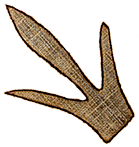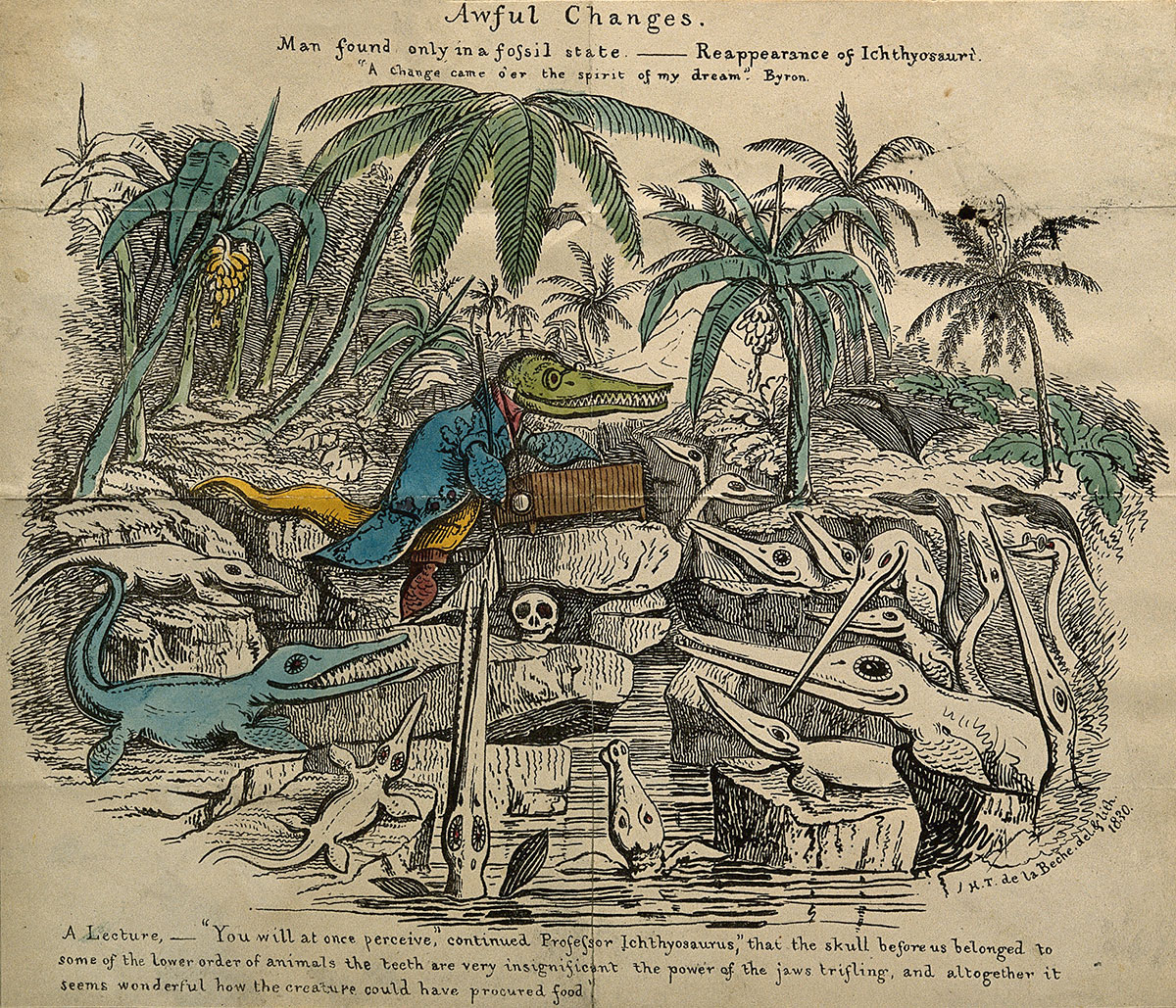 MENU
MENU
 MENU
MENU

"Ichthyosaurs attending a lecture on fossilized human remains". Lithograph by Henry de la Beche, 1830. He was probably poking fun of Charles Lyell's thought that evolution could be cyclical, with current life dying off and extinct animals returning. Image courtesy of Wikimedia Commons.
Edward made an overnight trip to Oxford University while Orra stayed to see the sights of London. He was impressed by its libraries, noting that on top of the 500,000 volumes in the Radcliffe and 20,000 in the Bodleian, each college also had a library of its own. He declared the Bodleian's circular room, light streaming in through windows high in the 80-foot dome, “the finest room I have seen in England for books or specimens save the Hunterian Museum.”
He was unimpressed by a graduation ceremony he happened to witness, thinking the kneeling and elaborate robes “ridiculous,” and was disgusted that one graduate was no scholar at all, but simply rich enough to command the degree. He was much happier to see the oldest Bible ever printed (“done in 1450”) and the glorious room containing thousands of manuscripts in Hebrew, one of the languages he could read.
He thought the Ashmolean Museum a “sad jumble,” the many fine specimens so crowded together they nearly formed a wall. Seeing the lecture hall of Professor William Buckland was bittersweet. Buckland had been one of his first English advocates regarding the fossil bird tracks, referring to them in his Bridgewater Treatise volume, but now he was in a “lunatic asylum.” Unknown at the time, tuberculosis had affected his brain. Disappointed not to meet a man he so much admired, at least Edward did get to see the actual chirotherium specimen of “tortoise tracks" discovered a few years earlier than the Connecticut River Valley footprints. He enjoyed the cartoons on the wall, one thought at the time to be of Buckland delivering a lecture with an ammonite in his hand and the other of a “saurian” lecturing while holding a human cranium.
Orra accompanied Edward to Cambridge two weeks later. Again, Edward witnessed a graduation ceremony, finding it not quite as ridiculous as the one at Oxford. Orra gave a detailed description of the robes and caps, noting that students were penalized for not wearing the regalia. Trinity Church was beautiful, its ceiling “magnificent” and “painted windows fine,” but the Calvinist Hitchcocks thought such ornamentation did not belong in a church. The best part of the day may have been viewing the “magnificent & well arranged collection” of rocks owned by a local druggist.
On June 24, Edward received word from Massachusetts requesting that he make a survey of institutions for agricultural education, as the state was considering opening one in Amherst. He made his first such visit on this trip to Cambridge, stopping to see the Agricultural Training School at Hoddesdon, which included courses in the classics, French, and German as well as in chemistry, "cattle physiology and pathology," botany, geology, and practical topics in mechanics, natural philosophy, surveying, and drainage. The school had only 35 students and no useful natural history collections, but a good 300-acre farm and, crucially to Edward, "prayers are attended morning and evening, and attendance on worship on the Sabbath is required."
Listen to what Orra wrote in her travel diary